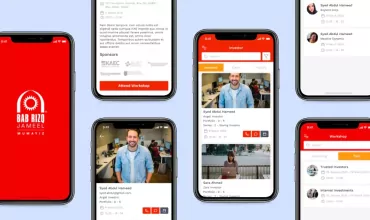What are different types of Software Outsourcing Models?

Table of Contents
Software outsourcing has been popular over the last two decades and has now become even more important for businesses due to the uncertainty caused by COVID-19. Global businesses are not keeping the purse-strings tighter than ever to save the costs whenever and wherever it is possible.
This is where software outsourcing shines through the way. Software outsourcing is the best choice for businesses who are looking for custom web development or mobile app development services but lack in-house expertise. Hiring a dedicated software development team can benefit global businesses to adopt the latest technology solutions, better focus on the core operations, enhanced productivity by streamlined business processes.
What is Software Outsourcing?
In the simplest terms, software outsourcing is the process of hiring a vendor that is specialized in delivering software development services. This vendor provides a team of software developers who understand the requirements and develop a software solution to meet the objectives. The hired individual or a team of developers will handle some or all of the software projects once the type of engagement model is finalized.
Read More: Three Engagement Models in Software Development
Outsourcing software development projects to a third-party software development company is widely considered the right choice and a cost-efficient way for a number of reasons.
There are various models in software outsourcing. The difference between them depends on how the models are brought into the frame and factors like vendor location, engagement, and contract.
Types of Software Outsourcing
Onsite Outsourcing
An outsourcing model where the vendor, a software development company, sends an individual or a dedicated team to the client location and works onsite to develop a complete software solution. It may be a website app, a mobile application, or any other digital solution leveraging technologies like AI & ML, IoT, AR-VR, etc. The period of the onsite outsourcing model is limited and not permanent. It may seem similar to staff-augmentation where companies send resources to other software development companies.
Onshore Outsourcing
The business can contact any software development company that is based out of the same country only. There are pros and cons associated with this model. The main benefits are that the team you hire would speak the same language, understand the working culture, and would be working in almost similar timezones. The downside is the cost, as the rates of them would be of the local market only and you will not be able to save money on software development. For example, a US business looking to hire a remote team in USA will definitely not be cheap.
Nearshore Outsourcing
This model applies where a business partners with a software development company that is based out of a different country, but in the same continent. There may be minor or no timezone differences and it is better to know the working culture as compared to offshore outsourcing. The businesses can also negotiate the rates of the engagement period which is a plus compared to onshore outsourcing. But the cost-saving would not be as significant.
Offshore Outsourcing
Offshore software development outsourcing is a model where the part of any software project, or the full project, is outsourced to a company in another continent. This is perhaps the best choice for businesses to identify the feasibility of all the offshore development companies and can save a huge chunk of money in software development.
This offshore outsourcing model is a perfect fit for budget optimized engagement and provides instant access to a cluster of talented web or mobile app developers. Businesses can hire the remote development team at hourly rates or monthly rates and can scale up the dev teams with ease. Timezone plays a significant role in this model where there is a benefit of time overlap for online video conferencing or meetings.
Read More: How to Choose the Right Offshore Development Company?
Multi-shore Outsourcing
Typically used by large-scale organizations and enterprises, where they hire offshoring services from multiple organizations depending on their current locations. The companies hired can be nearshore and offshore both, where they are assigned with distinct software project tasks to fulfill. The management and coordination must be taken care of, as all of them may use different project management tools. Also, effective communication channels must be set up for efficient collaboration.
Quick Summary
There are several reasons why global businesses love to opt for offshore outsourcing because of multiple benefits. The purpose of this offshore outsourcing is to gain multiple benefits in terms of saving time, effort, and money for hiring, managing, and maintaining a dedicated software development team.
Still unsure if offshore outsourcing is the best strategy for you? Let us be your guide!



